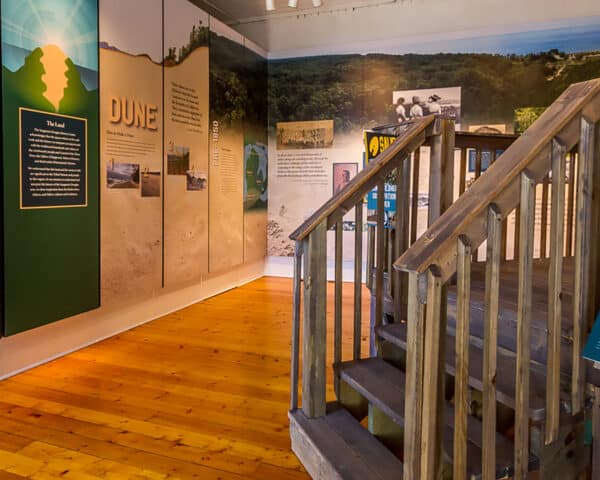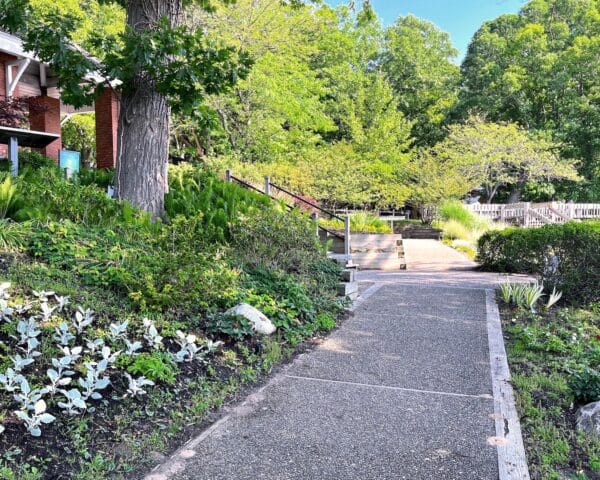The History Museum at Mount Baldhead Park
One of Michigan’s best-known and most-visited small-town museums is located right across the street from Mount Baldhead! It features an outdoor garden and a riverfront walkway — and it’s only a short walk from the Chain Ferry’s west landing.
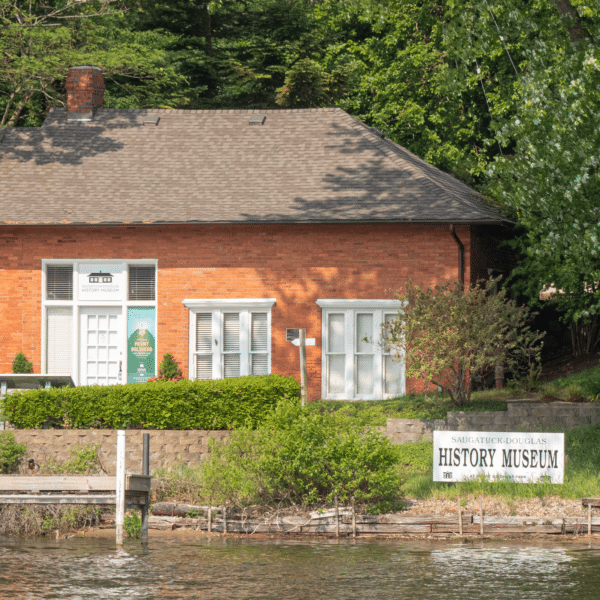
A Space for Discovering History and Bringing It Alive
The Saugatuck-Douglas History Museum annually draws nearly 10,000 visitors to its exhibits and more than 40,000 visitors to its outdoor garden and harbor-front walkway across from the foot of historic Mount Baldhead and just steps from the iconic Saugatuck Chain Ferry.
Location
The history museum is located the west bank of the Kalamazoo River at Mt. Baldhead Park.
735 Park Street
Saugatuck, MI 49453
Parking and admission are free (donations are welcomed).
Hours
May Hours
Friday-Sunday
11 AM – 3 PM
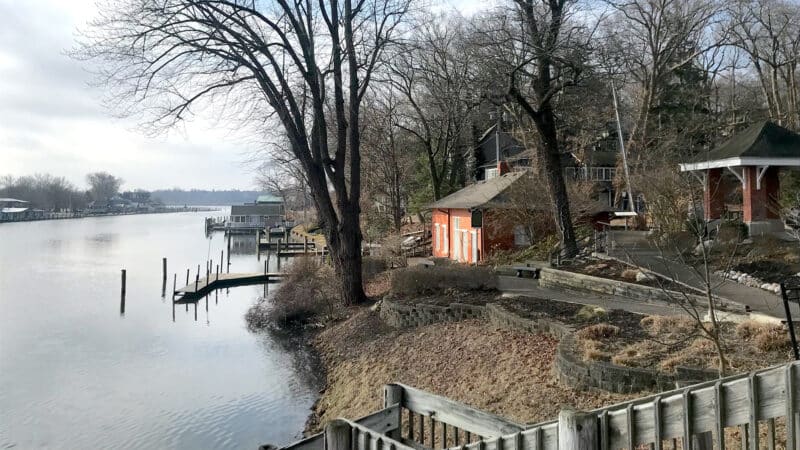
Current Exhibitions
Additional Attractions
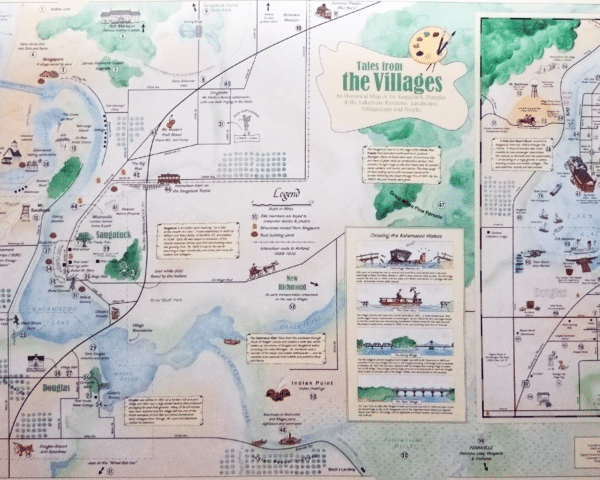
-
SuperMap
In the South Gallery you’ll find a 6-foot by 12-foot illustrated color wall map of the Saugatuck-Douglas area. It is integrated with an interactive computer display to provide a virtual tour through the historic area, highlighting significant people, places, and events.
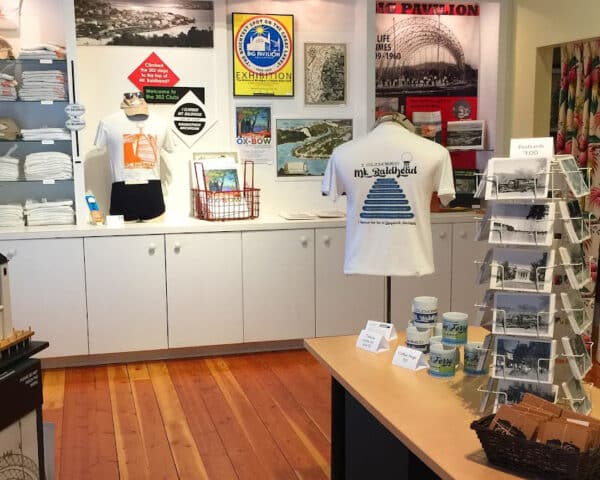
-
The Museum Shop
The Museum’s shop offers a variety of History Center publications, artworks, maps, photos, and postcards relevant to local history, along with locally created Saugatuck-Douglas art and souvenirs.
History of the Pump House
The Museum building, a simple structure in the prairie-craftsman style, was originally built as the village of Saugatuck’s first water pumping station, completed in 1904. It was designed by John Alvord, better known as the principal engineer of the Chicago Water System. Another summer resident, Harry Bird, designed the water delivery system. Water drawn from several large wells at the foot of Mt. Baldhead was pumped by large gasoline engines in the Pump House up to a 100,000-gallon reservoir at the top of Lone Pine Dune (north of Mt. Baldhead), from which it flowed by gravity through pipes crossing beneath the river to buildings and street hydrants in the village.
In 1910, the building was enlarged to also serve as the village’s first electric generating station. By the 1950s, water pumping and electrical generating functions had been moved to larger locations and the building fell into disrepair. By 1970, the building’s heavy slate roof had pushed out the walls and broken the interior tie rods. A portion of the west wall had fallen in, exposing the interior to the elements, and the east wall footings needed replacement. Windows and door were in bad shape and much of the brickwork needed repair.
Thanks to the research and documentation undertaken by History Center volunteers, the Saugatuck Pump House building has now been designated as a Michigan Historical Site and is listed on the National Register of Historic Places.
Make a Donation
Your membership supports our exhibits and educational opportunities which contribute the health of our tourist-based community. The History Center is a not-for-profit 501(c)3 organization with membership open to all.

